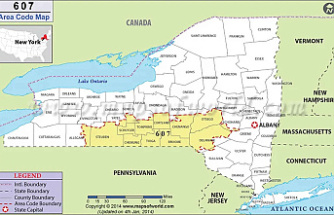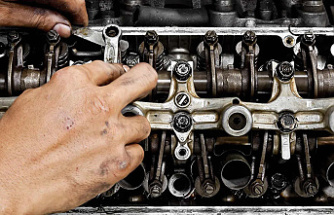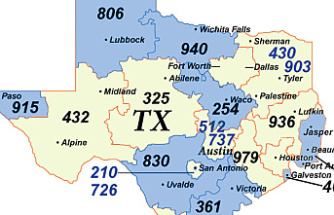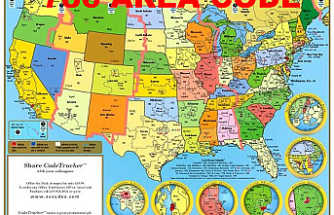A few years ago, Adidas was fading away in America like a tired 1970s rock band, its once-iconic three stripes producing more nostalgia than sales.
But the German sports brand found a more contemporary beat by partnering with rapper Kanye West and other pop culture icons and aggressively engaging its target audience of 14-to-24 year-olds where they live — on social media.
Suddenly, kids began buying the shoes their parents wore, now infused with retro chic. They bought them in such quantities that Adidas snuck up behind Under Armour and recaptured the No. 2 position in combined U.S. apparel and footwear sales from the Baltimore-based brand, according to an NDP Group analyst.
"It's such a thing," said Keli Reyes, a University of Maryland sophomore who wore white Adidas Superstar sneakers and a black Adidas ball cap as she walked on a recent afternoon at the school, where the athletic teams exclusively wear Under Armour.
Her friend, sophomore Remi Warner, also wore Superstars — a variation of the model that Mark King, Adidas' North American president, said he wore in 1972.
It's not just a retro feel that enabled 68-year-old Adidas — which is much older than rival athletic brands Nike and Under Armour — to mount a U.S. comeback. The company said it is more rapidly changing designs, colors and fabrics than before, catering to U.S. consumers accustomed to frequently seeing fresh looks.
"Until a couple years ago we probably hadn't done as good of a job as we would have liked on a lot of different fronts," said King, who became president of the North American division, based in Portland, Ore., in 2014. "And the first was making North America a real priority for the company."
In 2014, Adidas collaborated with West on a sneakers and clothing line. Singer Pharrell Williams also partnered with the brand. The next year, West unveiled his early Adidas designs at a New York Fashion Week event with pop celebrities Jay Z and Beyonce, Diddy and Rihanna in attendance. In the next few years, actress Emma Stone, pop star Taylor Swift and singer-actor Justin Timberlake were all photographed wearing Adidas.
From Tom Brady to Misty Copeland, Under Armour is increasing the ranks of celebrities who pitch their products.
Adidas-wearing stars and company initiatives created a social media buzz. Adidas actively engages fans on social media, for example, creating a contest asking them to tweet images of themselves for possible use on the label of a popular shoe line.
"We've been been really active in social media, which is where this 14-to-24-year-old lives their life," King said. "I think it's that constant availability that's really driving the connection. Brands are finding that's really the way to talk to consumers."
Analysts say Adidas has been pulling domestic market share from industry leader Nike and Under Armour, whose stock price fell in January after it announced sales that missed Wall Street expectations and a forecast for 2017 that showed slowing growth. That came despite Under Armour reaching a record $4.8 billion in sales in 2016.
Under Armour, the youngest of the three brands, only overtook Adidas in the United States in 2014, according to a Sterne Agee report citing sales figures from SportScanInfo.
But last fall, Adidas climbed back into second, according to Matt Powell, a sports industry analyst with NPD Group, using figures based on the group's retail tracking numbers.
The data showed striking gains by Adidas in footwear, Powell said. While the overall American footwear category grew in the low single digits in 2016, Adidas' growth was more than 80 percent, he said.
"You need to go back in history," Powell said. "Adidas had a history of not making products that American kids wanted to buy. They hit bottom in 2014. They really changed their approach to the U.S. market."
Under Armour did not respond to requests for comment on Powell's claim. Adidas' fourth quarter results will be released March 8.
The German company dwarfs Under Armour globally with $19.2 billion in revenue in 2015. Its North American sales were up 26 percent in 2016's second quarter and 20 percent in the third quarter.
It doesn't matter to Adidas whether American buyers in their teens or twenties know that the Superstars originated in 1969 and that another popular line, the Stan Smith, was named for an American tennis champion successful in the 1970s.
"The consumer is always looking for something new and fresh, but for that young consumer the Stan Smith and the Superstar may be new to them," said Jim Duffy, managing director of equity research for Stifel Financial Corp.
Adidas wouldn't survive, King said, if it were only a "museum brand."
"Successful brands in today's world look forward and not backwards. I do believe however that having a great history is a good thing," he said.
"We have a few franchises — like Stan Smith, like Superstar — that have been very popular the last two years. But, honestly, probably the No. 1 franchise is the Ultra Boost, which was launched just a couple years ago and was a running shoe that is now a high-fashion shoe."
Adidas endorsers include NBA all-star James Harden of the Houston Rockets, NFL star Aaron Rodgers of the Green Bay Packers and baseball's Kris Bryant, whose Chicago Cubs won last year's World Series.
Adidas designed the players' uniforms and warmups at last week's NBA All-Star Game, which included pop icons in attendance. Headliners at a pregame concert included Adidas-clad Darryl McDaniels, a founder of Run-DMC, a rap group from the '80s that long ago signed an endorsement deal with the brand.
"Nike, Under Armour and others have always stayed more in the athletic realm," Duffy said. "Adidas has been over the years comfortable going the direction of lifestyle and pop culture. With Kanye West, they seem to have found a great formula."
Even on the University of Maryland campus, Adidas figures prominently in the mix of students' casual wear — shoes, jackets, sweats and caps — along with Under Armour and Nike.
Under Armour founder and CEO Kevin Plank attended the university, played on the football team and developed the initial concept for the company while in College Park. He long ago locked up its athletic teams in Under Armour apparel deals.
But, adjacent to the campus, Stripe 3, a family-owned store that works closely with Adidas, has been selling the brand since 1984.
"Adidas is more popular the last couple of years," said Anna Lee, owner with her husband Kevin of the outlet, whose displays feature rows of sneakers, shirts, warmups, soccer balls and other gear with the brand's iconic three bars or three-leaf "trefoil" logos.
"Fashion does that. You hope it stays that way. I think there's room for everybody," Lee said. "I have a lot of respect for Kevin Plank. Great story."
Adidas' momentum appears less robust closer to Baltimore, according to a number of coaches and athletic directors. That may be because Under Armour has been intent in recent years on getting area schools into the fold — protecting its local "house" — and building brand loyalty among the region's youths.
At Randallstown High School, "I've noticed a wide variety of brands our students wear," said athletic director Michael Gelman. "We are not an Under Armour school, but I do see them as popular with our athletes as well as Nike and Adidas. I think Adidas tends to be more popular with the soccer players."
Among the Baltimore-area teams Under Armour has partnered with in recent years are the Gilman School, Archbishop Curley, Calvert Hall College High School, and Dunbar and River Hill high schools.
Athletes and other students at Under Armour schools are free, of course, to wear any brand they choose off the field.
"We sell a lot of stuff that people don't wear to play sports in," said King, the Adidas executive.
Adidas has roots in the 1920s when two brothers set up a shoemaking business in Germany. They later split and one brother — Adi Dassler — registered Adidas in 1949, with the name derived from his name. The other brother — Rudolf Dassler — started Puma, another sports brand.
While Adidas has been surging in the United States, the company said growth worldwide was expected to slow in 2017 as it restructures Reebok, its fitness brand.
But Adidas has momentum in the United States, Duffy said.
"They've had a number of different production introductions or different colorways and subtle style variations that kept the market fresh," he said. "And they kept supply tight and left retailers and consumers wanting more."
jebarker@baltsun.com
twitter.com/sunjeffbarker
Our editors found this article on this site using Google and regenerated it for our readers.












